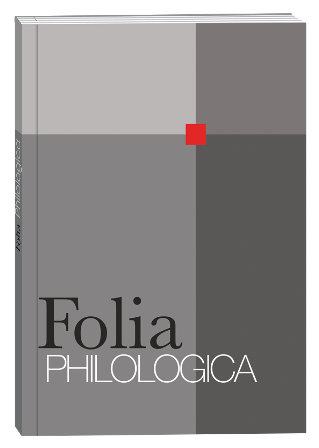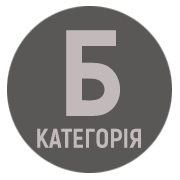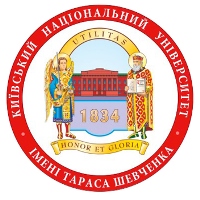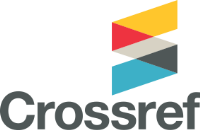IMAGE-BUILDING OF UKRAINE: LINGUISTIC ASPECT
DOI:
https://doi.org/10.17721/folia.philologica/2021/1/6Keywords:
linguistic imageology, image-building of Ukraine, image text, image-forming markers, Euro-2020, Olympic Games-2021Abstract
Modeling of the state image is an urgent problem of modern humanities. The article analyzes the image-buildingof Ukraine within the framework of linguistic imageology – an innovative linguistic direction, which is aimed at analyzingthe linguistic features of image construction.The aim of the article is a linguistic analysis of the image-building of Ukraine with a projection on current imagepublications about Ukraine in the modern media space. Realization of the set purpose provides the decision of a number of tasks, in particular: 1) definition of the extra- and intralingual factors providing construction in mass consciousnessof recipients of a positive image of our state; 2) media monitoring of current image publications about Ukraine in nationaland foreign mass media, which directly influence the formation of Ukraine's image; 3) elucidation of the main linguisticmarkers of modeling the positive image of Ukraine in such publications.Scientific novelty. The author considers the modeling of the state image in the context of media linguistic imageology –the newest direction of modern linguistics, focused on the search for linguistic dominants of image creation in the media.The author emphasizes the importance of taking into account a set of linguistic and extralinguistic criteria of state imagecreation, which include: broad informing of Ukrainian and foreign audiences about the main victories, achievementsof the country in various social spheres, what the leading state institutions and organizations are doing today (UkrainianInstitute, “Image Agency of Ukraine”, Ukraine Crisis Media Center, etc.), the use of special image-forming markersthat form in the mass consciousness of recipients a positive perception of Ukraine, such as emotional-evaluativeepithets, periphrastic, metaphorical constructions, phraseological transformations with expressive component etc. Thearticle analyzes the current image publications about Ukraine that appear in the media in connection with the releaseof the Ukrainian national football team in the Euro-2020 finals and the victories of Ukrainian athletes at the OlympicGames in Tokyo-2021.In conclusion, the author emphasizes that the problem of state image-building is extremely relevant forlinguistics, where the priority is to analyze the linguistic features of image creation. According to the author, in thiscontext, the task of the media linguist is to clarify effective linguistic tools for modeling a positive image of Ukraineat the textual level and identify effective language tools that will help to improve and “restore” the state image ina globalized media space.
References
Kozhevnikova, T.A. (2016). K voprosu o lingvisticheskoy imagologii [On the question of linguistic imagology]. Inostrannyye yazyki v vysshey shkole – Foreignlanguagesinhighereducation, 3 (38), 56-62 [in Russian].
Katynskaya, M.V. (2015). Kategoriya imidzha: podkhody k rassmotreniyu [Image category: approaches to consideration]. Teoreticheskaya i prikladnaya lingvistika – Theoretical and Applied Linguistics, 3, 61-70 [in Russian].
Kudinova, E.S., Yuklyaeva, E.A. (2021). Lingvisticheskiye i ekstralingvisticheskiye kriterii uspeshnosti imidzha sovremennykh politikov [Linguistic and extralinguistic criteria for the success of the image of modern politicians]. Vestnik Рис. 4. Асоціація України з Чорнобилем (південнокорейський телеканал MBC, трансляція церемонії відкриття Олімпійських ігор у Токіо) Moskovskogo gosudarstvennogo lingvisticheskogo universiteta. Gumanitarnyye nauki – BulletinoftheMoscowStateLinguisticUniversity. Humanitarian sciences, 4 (846) [in Russian].
Osin, R.V., Pershina, K.V. (2020). Sravnitel'nyy analiz obraza «YA» lichnosti Instagram-blogera i vospriyatiya mediaobraza Instagram-blogerov v molodezhnoy srede [Comparative analysis of the “I” image of the personality of Instagram bloggers and the perception of the media image of Instagram bloggers among young people]. Chelovecheskiy kapital – Human capital, 5, 132-141 [in Russian].
Zvereva, P.P., Maksimenko, O.I. (2013). Sovremennyye napravleniya lingvisticheskikh issledovaniy imidzha strany i yeye zhiteley [Modern directions of linguistic research of the image of the country and its inhabitants]. Vestnik Moskovskogo gosudarstvennogo oblastnogo universiteta. Seriya: Lingvistika – Bulletin of the Moscow State Regional University. Series: Linguistics, 6, 25-29 [in Russian].
Karayeva, N.A., Zatonskaya, N.A. (2019). Analiz lingvisticheskikh sredstv formirovaniya imidzha politika i strany na primere angloyazychnykh novostnykh statey [Analysis of linguistic means of forming the image of a politician and a country on the example of English-language news articles]. Innovatsionnyye tekhnologii obucheniya inostrannomu yazyku v vuze i shkole: realizatsiya sovremennykh FGOS. Sbornik nauchnykh trudov po materialam Chetvertoy Mezhdunarodnoy nauchno-prakticheskoy konferentsii – Innovative technologies for teaching a foreign language at a university and school: the implementation of modern FSES. Collection of scientific papers based on the materials of the Fourth International Scientific and Practical Conference, 302-313 [in Russian].









